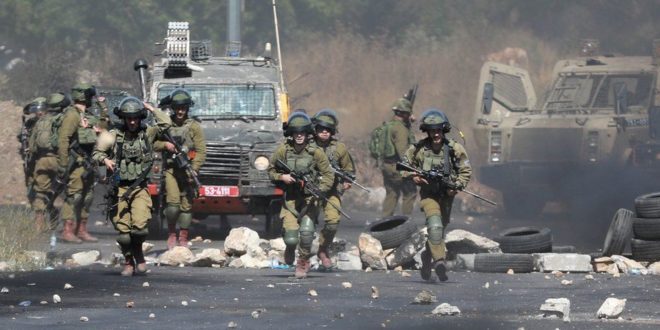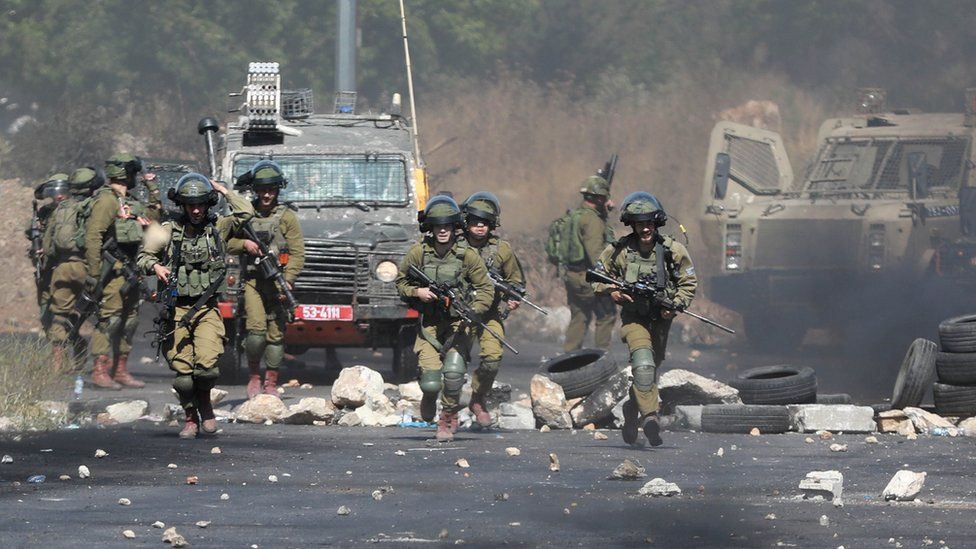
Violent clashes between Israeli troops and Palestinians have spread across much of the occupied West Bank, following days of hostility in Gaza.
At least 10 Palestinians are reported to have died in the West Bank unrest, while hundreds have been injured.
Israeli forces used teargas, rubber bullets and live fire, as Palestinians threw petrol bombs.
At least 122 people have also been killed in Gaza and eight have died in Israel since fighting began on Monday.
Many towns and cities in the occupied West Bank were convulsed by angry protests on Friday, marking a widening of the conflict which has led to continued international calls for calm.
There were running battles between Israeli soldiers and young Palestinians, who appear newly emboldened by the events of the past week, the BBC’s Arab affairs editor Sebastian Usher says.
Meanwhile, there were protests at the Jordanian and Lebanese borders with Israel, in support of the Palestinians, on Friday. One man died after being hit by Israeli shell fire while protesting, state media in Lebanon reported.
This week’s violence in the region is the worst since 2014. It came after weeks of rising Israeli-Palestinian tension in East Jerusalem, which culminated in clashes at a holy site revered by both Muslims and Jews. Hamas, the militant group that rules Gaza, began firing rockets after warning Israel to withdraw from the site, triggering retaliatory air strikes.
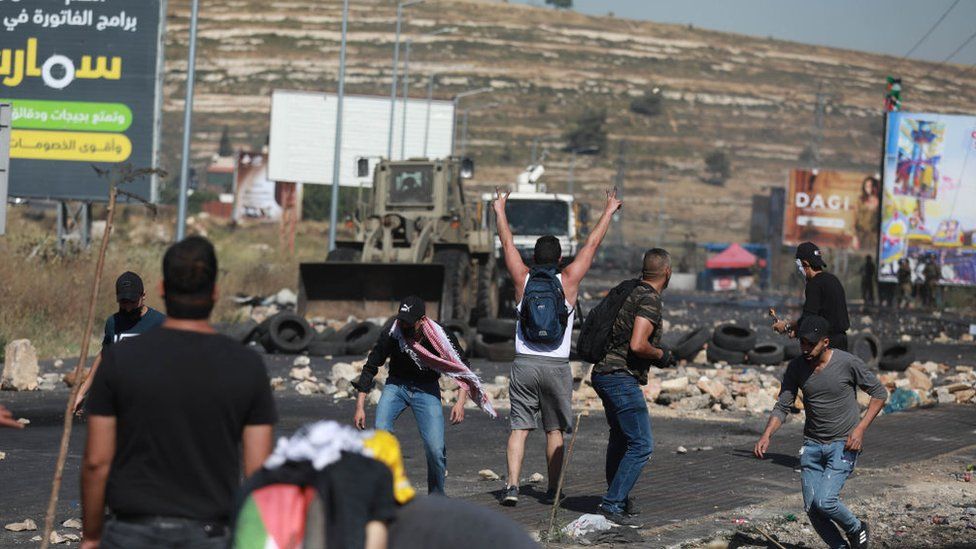 IMAGE COPYRIGHTGETTY IMAGES
IMAGE COPYRIGHTGETTY IMAGESThe Israeli military said it conducted an operation overnight to destroy a network of Hamas tunnels that it dubbed “the metro”, but no troops had entered Gaza. It added that – over the course of Thursday evening and Friday morning – 220 more projectiles were fired from the Gaza Strip.
In southern Israel, an 87-year-old woman died after falling on her way to a bomb shelter near Ashdod. Other areas including Ashkelon, Beersheba and Yavne were also targeted.
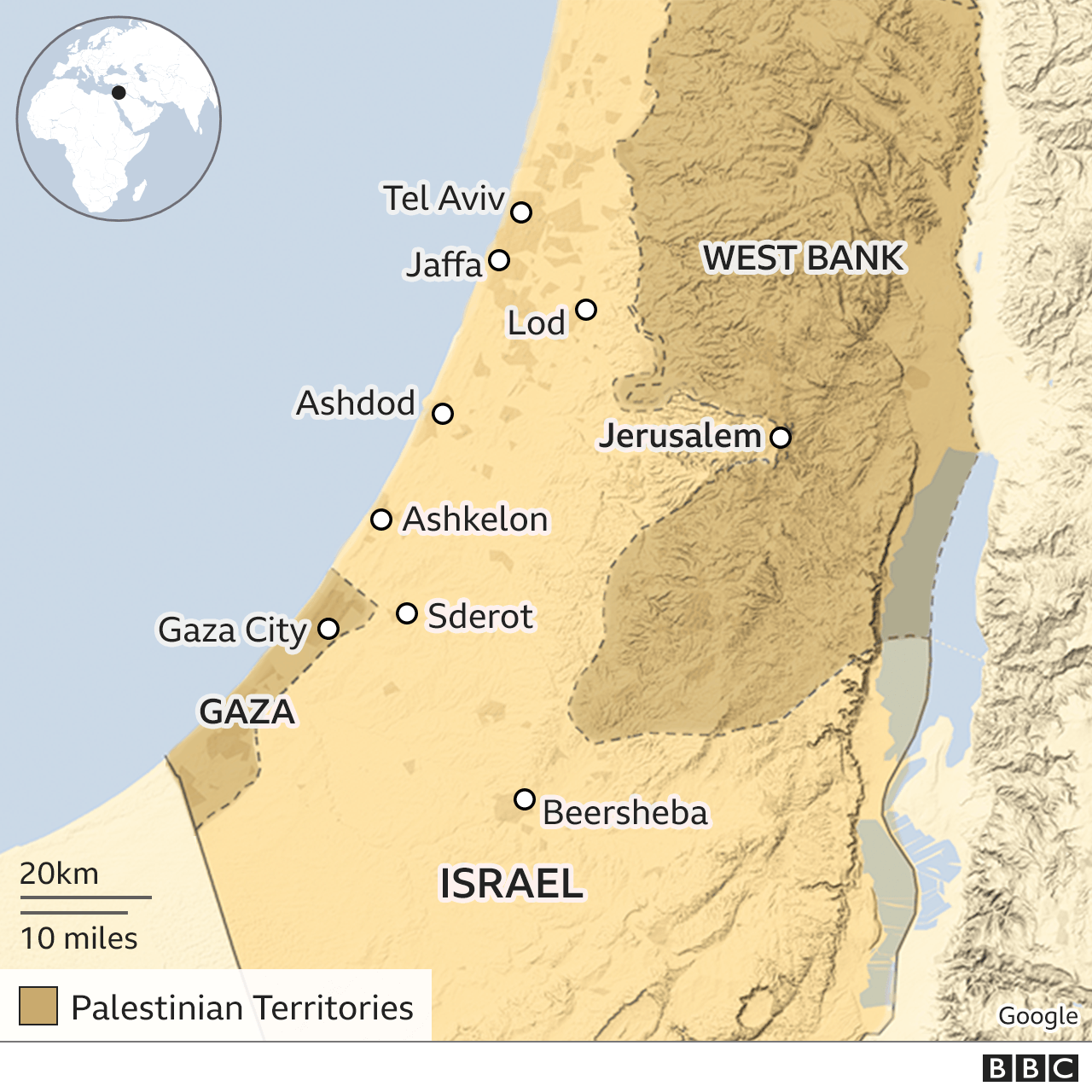

Gaza’s health ministry said 31 children were among those killed since fighting began, and many other civilians have died. Another 900 Gazans have also been wounded. Israel says dozens of those killed in Gaza were militants, and some of the deaths were caused by misfired rockets from Gaza.
On Friday, the United Nations said that an estimated 10,000 Palestinians had left their homes in Gaza since Monday because of the conflict.
The conflict has also seen Jewish and Israeli-Arab mobs fighting within Israel itself, prompting the president to warn of civil war. Defence Minister Benny Gantz ordered the security forces to suppress the internal unrest on Thursday, and more than 400 people were arrested.
Police say Israeli Arabs have been responsible for most of the trouble and have rejected the accusation that they are standing by while gangs of Jewish youths target Arab homes.
In Gaza, Palestinians fearing an incursion by Israeli troops have been fleeing areas close to the border with Israel. Residents who had left Shejaiya in Gaza City said shells had been falling on homes.
“We felt like we were in a horror movie,” said local resident Salwa Al-Attar, who escaped the bombardment with her family. “The planes were above us, and the tanks and navy were bombing – and we could not move. The children, women and men were screaming.”
In a statement released early on Friday morning, Israeli Prime Minister Benjamin Netanyahu said the military operation against Palestinian militants would continue for “as long as necessary”. He added that Hamas would pay a heavy price, as would other “terrorist groups”.
A Hamas military spokesman said the group was ready to teach Israel’s military “harsh lessons” should it decide to go ahead with a ground incursion.
On Thursday, Israel’s military called up 7,000 army reservists and deployed troops and tanks near its border with Gaza. It said a ground offensive into Gaza was one option being considered but a decision had yet to be made.

A swirling array of conflict
Analysis by Paul Adams, diplomatic correspondent in Jerusalem
Israel’s Prime Minister Benjamin Netanyahu has spoken of Israel waging a battle on two fronts.
But he may not have been doing justice to the swirling array of conflicts currently raging across Israel, Gaza and the West Bank. Rarely in recent years has violence erupted in all of these places at the same time.
A week ago, the fear that Palestinians in east Jerusalem might be evicted to make way for Jewish settlers, coupled with repeated raids by Israeli security forces on the area surrounding Jerusalem’s al-Aqsa mosque, galvanised opinion among Israeli Arabs and triggered waves of rocket attacks by Hamas.
Long-simmering resentments among Israel’s Arab minority exploded in several of the country’s mixed cities. Violent gangs, Jewish and Arab, exploited the tension.
By Friday, the violence had circled back to the West Bank where the death toll in clashes with the Israeli army has crept up.
Jerusalem, land rights, holy places and decades of unresolved conflict: this week’s spasm of violence has highlighted them all.

As fighting entered its fifth day, United Nations Secretary General António Guterres called for “an immediate de-escalation and cessation of hostilities in Gaza and Israel”.
His plea echoed that of other diplomats – including from Israel’s ally the US – but appeals to Israeli and Palestinian leaders have so far failed to produce a ceasefire agreement.
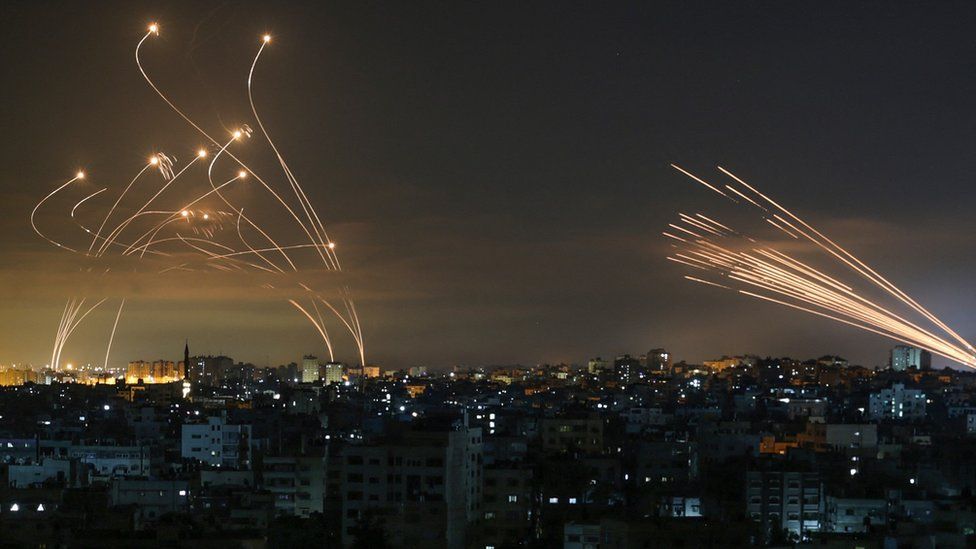 IMAGE COPYRIGHTAFP
IMAGE COPYRIGHTAFPA senior Hamas official has said the group is ready for a “reciprocal” ceasefire if the international community pressures Israel to “suppress military actions” at the disputed al-Aqsa Mosque in Jerusalem.
However, a senior adviser to Mr Netanyahu told the BBC that international calls for restraint were misplaced.
“We didn’t want this conflict, but now that it’s started it has to end with a sustained period of quiet,” said Mark Regev. “That can only be achieved by Israel taking out Hamas – their military structure, their command and control.”
What caused the violence?
The fighting between Israel and Hamas was triggered by days of escalating clashes between Palestinians and Israeli police at a holy hilltop compound in East Jerusalem.
The site is revered by both Muslims, who call it the Haram al-Sharif (Noble Sanctuary), and Jews, for whom it is known as the Temple Mount. Hamas demanded Israel remove police from there and the nearby predominantly Arab district of Sheikh Jarrah, where Palestinian families face eviction by Jewish settlers. Hamas launched rockets when its ultimatum went unheeded.
Palestinian anger had already been stoked by weeks of rising tension in East Jerusalem, inflamed by a series of confrontations with police since the start of Ramadan in mid-April.


It was further fuelled by Israel’s annual celebration of its capture of East Jerusalem in the 1967 Middle East war, known as Jerusalem Day.
The fate of the city, with its deep religious and national significance to both sides, lies at the heart of the decades-old Israel-Palestinian conflict. Israel in effect annexed East Jerusalem in 1980 and considers the entire city its capital, though this is not recognised by the vast majority of other countries.
Palestinians claim the eastern half of Jerusalem as the capital of a hoped-for state of their own.
BBC.COM
 Home Of Ghana News Ghana News, Entertainment And More
Home Of Ghana News Ghana News, Entertainment And More
